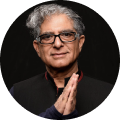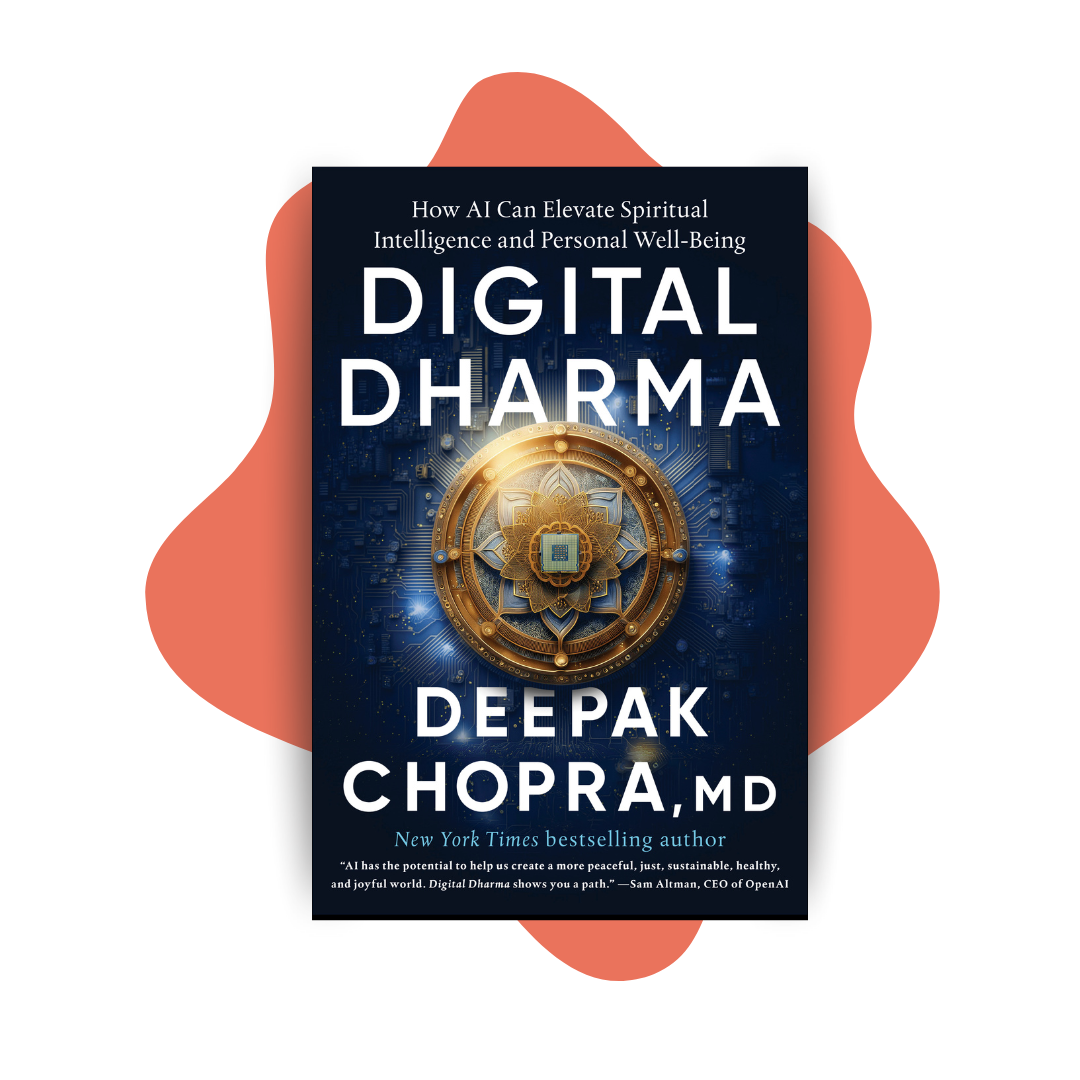Foreword to Supernormal.
When your mind and heart are truly open abundance will flow to you effortlessly and easily.
Foreword by Deepak Chopra to the book SUPERNORMAL written by Dean Radin PhD.
The strange thing about the paranormal— or the supernatural, the miraculous, and all other synonyms— is that no matter how often you prove it, it remains unproven. There have been hundreds of studies on clairvoyance and viewing at a distance, arising from age- old experience.
Invariably, as Dean Radin patiently explains in this book, the experiments indicate that the experience of reading someone else’s thoughts, seeing a faraway event, or anticipating the future is real. Ever since science demolished faith as a way of knowing reality, facts are supposedly supreme, and when the same fact is repeatedly shown to be true, that is enough to change accepted reality. So why, in this case, have facts proved helpless?
The answer is complex, subtle, and yet as common as any ingrained prejudice. Facts don’t change minds as often as they confirm what the mind insists on believing. Therefore, the path from faith to facts is much more fragile than we like to think, and along the way are crouching adversaries— hidebound beliefs, stubborn biases, ad hominem attackers, skeptics who know in advance that X cannot be true, and the most elusive of adversaries, collective consciousness. Mass opinion can stop an unwelcome fact in its tracks, which has happened for centuries when miracles, wonders, magic, and the paranormal have been too uncomfortable to confront. Behind the cliché that you create your own reality there is a shadow: If you don’t create your own reality, it will be created for you. For this reason, Radin’s discussion of supernormal abilities, which were fi rst explained in a systematic way in an ancient Indian text known as the Yoga Sutras of Patanjali, walks a double line. He presents the amassed evidence for all kinds of “superpowers” while nudging us persuasively to look at why something can be proven and unproven at the same time.
This double track is the only sensible way to get people to change their minds, adhering to the familiar adage “A man convinced against his will is of the same opinion still.” Any number of controlled studies have demonstrated that when people are presented with facts that contradict their fi rmly held beliefs, they tend to ignore the facts; even more perversely, a sizable percentage of people will become more confirmed in their beliefs the more contravening facts you present.
The grassroots spiritual movement tagged generically as the New Age firmly divided society into believers and nonbelievers in all kinds of matters that Radin covers, and he is mature in approaching hotbutton topics as a peacemaker, not another divisive voice. That’s a fortunate stance. When science already has ample evidence about phenomena that are firmly excluded from the official picture of reality, winning acceptance requires a grasp of human psychology. The art of persuasion is subtle, but it is also based on everyday experience:
Why prove to a man he is wrong? You can’t win an argument, because if you lose, you lose it; and if you win, you lose it. You will feel fine. But what about him? You have made him feel inferior, you hurt his pride, insult his intelligence, his judgment, and his self- respect. This piece of practical psychology, written decades ago by Dale Carnegie, becomes relevant to the paranormal once you substitute the word scientist for man in the first sentence. The reason that facts are secondary in proving the validity of superpowers is that science, like any human enterprise, is overseen by individuals who have a stake in what they do, and that stake includes pride, intelligence, judgment, and self respect, as Carnegie grasped.
In Supernormal, Radin calms our nerves and our prejudices at the same time, which levels the field. He is willing to call the path of yoga, which is held to develop supernatural abilities, “legendary,” but he also fixes his stern gaze on science’s self- contradiction when it refuses to accept findings that were arrived at through impeccable use of the scientific method. As he wryly notes, if science is to change in the direction of a new reality, teeth grinding has to lessen over time.
But why a new reality and what does it have to do with levitation, clairvoyance, invisibility, and many other claims that Patanjali made? The simple answer is that the old reality has worn itself out. In a chapter devoted to the Eightfold Path of Science (a play on the Eightfold Path of Buddhism), Radin looks at the principles that modern science is based upon and shows, quite accurately, that many were exploded by the quantum revolution a hundred years ago, and others have been steadily weakened. Once time and space were no longer absolutes, once physical objects were reduced to whirling clouds of energy and cause and effect turned into a game of probabilities instead of certainties, there was a radical shift in how reality is perceived. This shift is amazingly consonant with the ancient seers of India, and for forty years quantum concepts have been woven into spiritual concepts, with voices ranging from a physicist like Fritjof Capra to a spiritual luminary like the Dalai Lama confi rming the parallels. Radin adds his voice to a veritable chorus but with restraint. His talent lies in returning to basics and fi nding common ground.
Well aware that few people outside the specialized field of ancient Indian studies will know of the Yoga Sutras, and who will blink to see Sanskrit terms like “siddhi” and “samyama,” he travels adeptly between common experience (especially psi experiences of clairvoyance and subtle intuition) and the arcane of mysticism. The goal is to persuade the reader, not against his (or her) will but with willing cooperation. “Remember when X happened to you? Well, the same thing was known to the seers of yoga and has been shown to be valid in the laboratory.” Radin’s aim isn’t to make his own version of reality the right one. Instead, he wants to show that there are more choices than people generally realize, and some of those choices add greater power to the mind, increase the potential for uncovering greater insight, and eventually turn the cliché of “You can create your own reality” into a living experience. Radin doesn’t proselytize about which version of reality anyone should choose, but in his evenhanded way he is also insistent that some realities that seem outlandish to science, such as the reality where a person can levitate, are not ridiculous, superstitious, or ignorant.
Hundreds of observers have recorded in private diaries, public statements, and sworn oaths that they saw Joseph of Cupertino levitate (among the many levitating Catholic saints, this seventeenth- century figure was alive almost fi fty years after the death of Shakespeare), and Radin makes note of it without apology or second- guessing. Yet this book isn’t a wonder- working checklist from the past. It goes beyond the worldview in which miracles are unquestioned and the opposing worldview, in which miracles are preposterous, to find reconciliation. To some extent, the judgment of Solomon is involved – both sides have something to say and something to learn from each other (Reconciliation was on Einstein’s mind when he made his famous comment, “Science without religion is lame, religion without science is blind.”) Clearly that’s not good enough, because reality stares us in the face, and we must relate to its actuality. Endless arguments over how to model reality— for science and religion are merely models— are digressions. With that in mind, Radin doesn’t lose sight of the radical mystery that reality poses, not just to mystics but to hard- nosed realists among the quantum pioneers.
In the book’s closing pages, two stark statements of fact are quoted. The first comes from Max Planck, who originated the quantum revolution: I regard consciousness as fundamental. I regard matter as derivative from consciousness. We cannot get behind consciousness. Everything that we talk about, everything that we regard as existing, postulates consciousness. Planck felt that he was stating a fact that couldn’t be evaded (which turned out to be a poor prediction of how powerful evasion can be). Since Patanjali and all the Vedic seers espoused consciousness- based reality, Radin has subtly turned the tables. It’s not yoga’s job to prove that consciousness is the foundation of all experience; it’s science’s job to prove that it isn’t. Such proof is far from forthcoming. But Radin optimistically points out that a new generation of scientists, less liable to grind their teeth, is steadily coming to terms with consciousness as a factor that cannot be set aside, evaded, wished away, or treated with contempt.
To support his optimism, Radin quotes another quantum pioneer, Wolfgang Pauli: “It is my personal opinion that in the science of the future reality will neither be ‘psychic’ nor ‘physical’ but somehow both and somehow neither.” In other words, the issue is not either/ or, but both/and, a point that this book emphatically declares. To take consciousness seriously is a step in the evolution of science, one that extends the “spooky” nature of the quantum world. Spookiness isn’t going away; neither are the world’s wisdom traditions.
Two camps of visionaries, from the distant past and the fringes of the present, are advancing on us. Their message is about the conscious evolution of humanity, and as this perceptive book shows, when the two camps of visionaries merge, nothing will ever be the same.


Why does someone feel the need to prove things like that..? It seems to me it is nothing special, it are just abilities that "come" with a state of being. Just like a tool that can be used on the path, like glasses can make a person see things more clear.
I think the book "Autobiography" of Paramahansa Yogananda is one of the best I have read about yoga and meditation of the past masters. He mentioned a very interesting master in the Tibetan mountains Babaji. I am looking forward to read and study this book. I have loved meditation and yoga for 20 years now. So reading this book will be great.
Livro: Supernormal- Deepak Chopra!